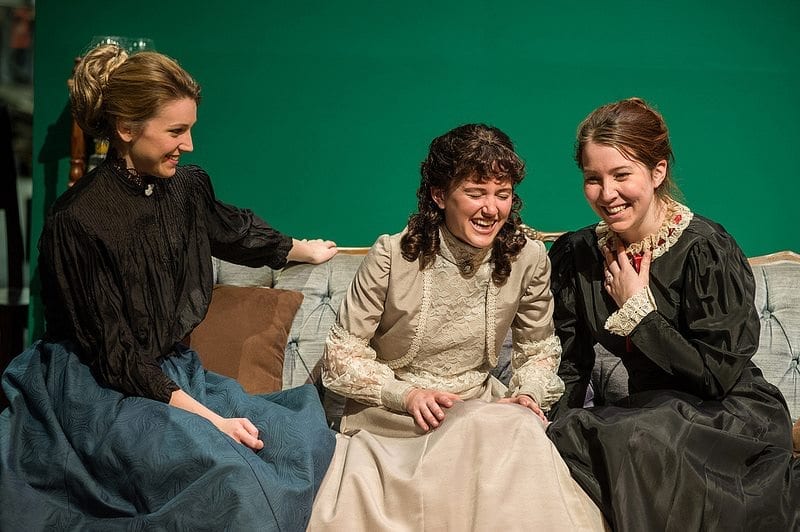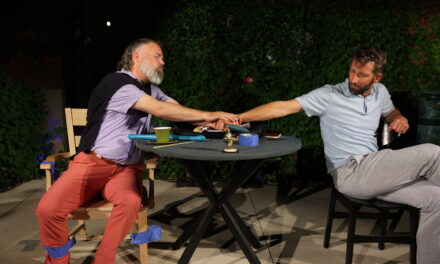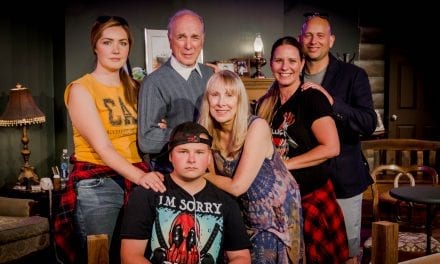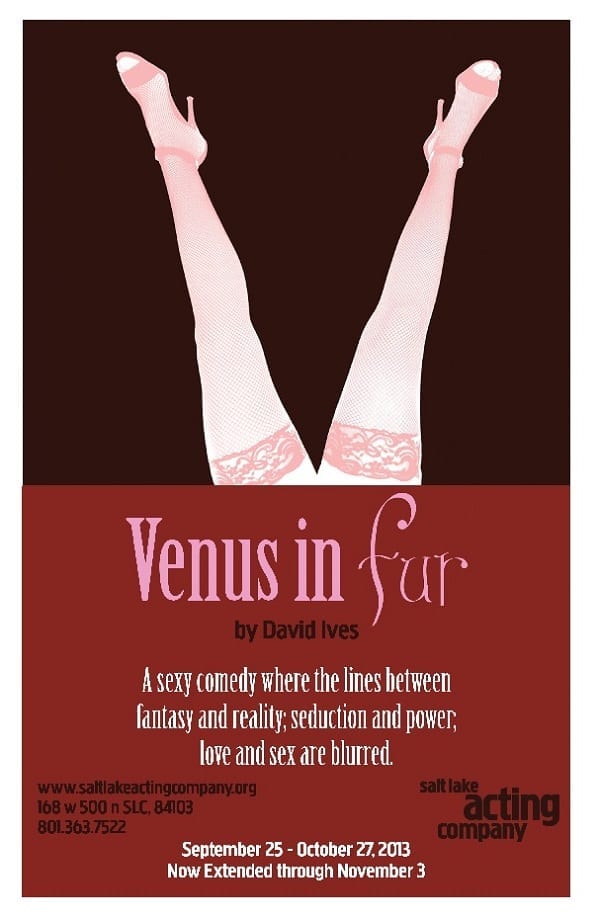LOGAN — Walking into the black box theatre on Utah State University’s campus, I did not know what to expect for Home, I’m Darling. Described as a dark comedy, I was intrigued by the idea of an unknown script as part of the Lyric Rep’s summer season. After watching the show, I can easily say that this leap of faith paid off. With a thought-provoking script, innovative set design, and distinguished performances, Home, I’m Darling at Lyric Repertory Company is a must-see.
Home, I’m Darling is a dark comedy that delves into the tension between personal desires and societal expectations, as Judy and her husband grapple with the pressures of maintaining a picture-perfect life. As their seemingly ideal domestic routine begins to crack, the play explores themes of identity, fulfillment, and the complexities of love in the modern world and whether happiness can truly be found in the pursuit of perfection. Written by Laura Wade, this script was ahead of its time, asking questions about a modern practice of being nostalgic for an era that one did not inhabit. While the script itself is highly engaging, it is Lyric Rep’s design choices that really made it spring to life.
Because of the nature of the script, Home, I’m Darling demands aesthetic perfection, relying heavily on the production’s designers to bring so much of the unspoken script to life. The team at Lyric Rep not only brings it to life, but brings their detailed expertise to make a gorgeous show.

Scenic design by Milinda Weeks, properties design by Alison Liljenquist, and costume design by Philip R. Lowe. Sydnee Fullmer as Judy and Ariana Whatcott as Fran.
Scenic Designer Milinda Weeks creates a detailed 1950’s home, with cream, turquoise, and pink wallpaper galore. The attention to detail between Weeks and properties designer Allison Liljenquist is exquisite. The teacups match the kitchen tile which match the bedspread, depicting a vintage paradise that seems to be lifted right out of a mid-century photograph. Even more impressive is the economic use of space, as the multi-storied house is built inside of the small black box theatre. Both designers’ use of color, pattern, and texture helps audience members become immersed in the picture-perfect 1950’s home of the play.
Similar to the set design, costume designer Philip R. Lowe masterfully stitches together the many decades of the script. Lowe creates several vintage dresses for Judy, each accentuating the stiffness of the 1950’s housewife. The dresses lay on top of a corset and many included a hoop skirt frame, and the first dress even matches the wallpaper! These designs are beautifully contrasted with the loose, free flowing outfits of Judy’s hippie mom. The costume juxtaposition between the two could not be clearer, and this design allows the audience to see into the mind of each character. This is true for each character as Lowe helps to uncover the secrets of the play.
Speaking of secrets, the main character, a 1950’s housewife named Judy, is played by Sydnee Fullmer. Fullmer begins the play with static inflections and nearly robotic movements, choices that may confuse at first. As the play progresses, however, Fullmer demonstrates her ability to express layers of emotion with just a couple of subtle facial expressions. She slowly communicates the nuance of her character’s situation and peels away the mask of the “perfect” life she’s living.

Sydnee Fullmer as Judy and Lance Rasmussen as Johnny.
Fullmer’s talented performance is matched by her onstage counterpart, Lance Rasmussen as Johnny. Employing a similar method, Rasmussen first allows the audience to see his Johnny as oblivious, only to slowly wipe away the layers of discontentment that Johnny feels. Rasmussen’s performance feels particularly grounded in Act Two, contrasting with Fullmer’s stilted onstage persona. The pair evolve together onstage, relying on each other’s performances to provide further emotional deliveries. Fullmer and Rasmussen shine the most when they are acting together.
Another bright star of the production is Leslie Brott as Judy’s mother, Sylvia. While in much fewer scenes than Fullmer and Rasmussen, Brott steals the spotlight whenever she is onstage. The majority of Brott’s performance is relaxed and comfortable. However, she occasionally injects energetic spurts into her performance that engages the audience and her fellow actors onstage. This technique works marvelously in her final monologue that addresses the play’s central conflict, showing that Brott knows how to balance making an audience laugh and tugging at their heartstrings.

Leslie Brott as Sylvia.
These talented performances are in large part due to the direction of Amanda Dawson. Focusing on contrast, each performance shows the journey of a character in and out of a world of fantasy. Particularly noticeable in scenes with larger groups of people, this complicated dynamic is simultaneously hilarious and heartbreaking. Ariana Whatcott as Fran skillfully toes the line of hopeful and heartache in Act Two when her onstage husband is accused of sexual advances on a coworker. Whatcott, previously the show’s comedic relief, settles into a realistic gloom at the news. Whatcott’s performance, and everyone else’s, demonstrates the intricacy of the script and the detailed direction of Dawson. While I do wonder if there could have been further direction for the scene changes, as some of them were lengthy, the overall direction of the piece harmoniously highlights the strengths of each cast member.

Sydnee Fullmer as Judy.
Altogether, Home, I’m Darling is a triumph. While the script is a powerful piece of art, it is the coordination of the production team and the cast that makes this particular production so wonderful. If you’re anywhere near Logan, make sure to say, “Darling, I’m Home!” to this show.





